Purchase nicotinell old
 The nineteenth A?a??A?Great heroes dayA?a??A? (GHD) was observed by the Liberation Tigers of Tamil Eelam (LTTE) on Thursday November 27. In recent times the most important event for the LTTE has been its annual A?a??E?Maaveerar NaalA?a??a?? or A?a??A?Maaveerar ThinamA?a??A?held each year.
The nineteenth A?a??A?Great heroes dayA?a??A? (GHD) was observed by the Liberation Tigers of Tamil Eelam (LTTE) on Thursday November 27. In recent times the most important event for the LTTE has been its annual A?a??E?Maaveerar NaalA?a??a?? or A?a??A?Maaveerar ThinamA?a??A?held each year.
Various observances are held in Sri Lanka and abroad to commemorate the Tiger cadres who have died for the Tamil cause. A?a??E?Puligalin Thaagam Thamil Eelath ThaayagamA?a??a?? (Thirst of the Tigers is for a Tamil Eelam homeland) is the motto of the LTTE.
An important feature of the GHD has been the ceremony where LTTE Leader Velupillai Prabhakaran pays homage to the fallen cadres. The centrepiece of this ceremony is his address to the Tamil people in his capacity as the self-styled national leader of the Tamil Eelam nation.
This yearA?a??a??s GHD address by Prabhakaran came at a time when the LTTE was suffering setback after setback on the military front. It was only last year that Defence secretary Gotabhaya Rajapaksa predicted that the 2007 Great Heroes Day would be the last one for the tiger chief.
Prabhakaran however is still alive and what is more lived to deliver another GHD address. Given the series of military reversals undergone by the LTTE in recent times many expected or wanted the Tiger supremo to throw the towel in.
A number of articles and even editorials appeared in the Sri Lankan media ridiculing and mocking Prabhakaran and the LTTE for its perceived poor track record in military matters.
There is a widespread belief in the country and abroad that the LTTE is militarily weak and therefore is on the verge of being defeated conclusively by the armed forces. With the Rajapaksa regime utilising its military successes to consolidate itself in power a massive propaganda campaign is on to project an image that the Tigers are on the decline. If recent military developments are the sole criteria to assess the strength or weakness of the LTTE there was some justification at least for this opinion to gain ground.
This impression has led to an atmosphere of triumphalism in the country amidst many sections of the majority community. Those who disagree or dissent are unfairly depicted as traitors or Tiger agents.
There were quite a few who expect Prabhakaran to call it quits or face extinction. A few actually advised him to surrender arms and enter the negotiating process.
It was against this backdrop that PrabhakaranA?a??a??s annual GHD address was delivered last Thursday. If anyone thought of Prabhakaran as a battered, bleeding boxer, reeling on the ropes, gasping for breath, they were mistaken.
The Tiger chief was defiant as ever. Maintaining tremendous serenity amid severe strain, the beleaguered LTTE chief read out his prepared speech in customary style.
Though different analysts tend to draw different conclusions from the address, to this writer, the most significant aspect of the LTTE leaderA?a??a??s speech was his avowed declaration to continue fighting against overwhelming odds.
Here are some relevant excerpts from the translated version in English:
A?a??A?Today, the Sinhala state has, as never before, placed its trust on its military strength, on military modalities and on a military solution. As a result, the war has gathered intensity and momentum. In truth, this is not a war against the LTTE as the Sinhala state professes. This is a war against the Tamils; against the Tamil nation. In short; a genocidal war.A?a??A?
A?a??A?With various countries of the world buttressing the genocidal war on the people of Tamil Eelam, we are waging a defensive war for the freedom of our people.A?a??A?
A?a??A?We have faced forces much mightier than ours. We have had direct confrontations even against superior powers, stronger than us.A?a??A?
A?a??A?We have withstood wave after wave of our enemy attacks. When compared to these happenings of the past, todayA?a??a??s challenges are neither novel nor huge. We will face these challenges with the united strength of our people.A?a??A?
A?a??A?No great changes have taken place in the Sinhala political panorama. Politics there has developed into the form of a demonic war.A?a??A?
A?a??A?When it comes to the Tamil national question, the Sinhala nation is adopting only one policy. It is obviously a policy of suppression. Even the tinge of hope our people had that the Sinhala nation will abandon its path of violence and offer justice, has now evaporated. Our people are not ready to trust the Sinhala nation again and get cheated.A?a??A?
A?a??A?It is true Tamil Eelam is a small nation on the globe. However it is a nation with great potential. It is a nation with a characteristic individuality. It has a distinctive language, cultural heritage and history. As the freedom movement of the people of Tamil Eelam we will never, ever allow Sinhala occupation or Sinhala domination of our homeland.A?a??A?
A?a??A?Whatever challenges confront us, whatever contingencies we encounter, whatever forces stand on our path, we will still continue with our struggle for the freedom of the Tamil people. On the path shown by history, on the command of the circumstances of today, we will continue with our struggle till alien Sinhala occupation of our land is removed.A?a??A?
This writer does not agree with most views expressed by Prabhakaran both in his speech. The thrust of his address is all about laying the blame on everyone else but the LTTE and himself. Always the A?a??A?othersA?a??A? are at fault.
Recent history demonstrates very clearly that the LTTE had not utilised the opportunity that arose for exploring a solution on federal lines through negotiations. But the Tiger supremo is silent on why the tigers agreed in Oslo to A?a??A?exploreA?a??A? and then performed a political somersault.
It is certainly true that Sri Lankan Tamil people are suffering greatly under this government. But it was the LTTE that facilitated the election of Mahinda Rajapaksa by enforcing a boycott of the presidential elections in areas controlled by it then.
Also Prabhakaran in his GHD address of 2005 called the new president a A?a??A?pragmaticA?a??A? man and stated that Rajapaksa would be given time to resolve theA?A? problem Yet within days the Tigers began launching attacks through its A?a??A?acolytesA?a??A? called A?a??A?Makkal padaiA?a??A? or A?a??A?peoples forceA?a??A?.
Then came provocative acts like the suicide bomber attack on Army commander Sarath Fonseka, the blocking of water at Maavilaaru, synchronised attacks on Muhamaalai, Muthur and Mandaitheevu, the artillery barrage on Trincomalee harbour from Sampoor etc.
It was in this atmosphere that the current military campaign was launched by the Rajapakse regime. It has been rather ruthless with little concern for the plight of ordinary civilians.
Despite expressing concern for the Tamil predicament there has been little concrete action by the International community to alleviate it. This is not because the IC is against the Tamils. This unjustified apathy is due to its pronounced antipathy towards the LTTE.
Excerpting certain paragraphs while disagreeing with the essence of arguments expressed in those is merely to draw attention to the actual mindset of the Tiger leader. There is a tendency to be lulled into a false consciousness by believing oneA?a??a??s own propaganda that the LTTE is on the edge of a dangerous precipice.
Several analysts and commentators have portrayed PrabhakaranA?a??a??s speech in a negative light as having been stated from a position of weakness. This may give a A?a??A?feel good feelingA?a??A? to many.
It would however be a grave blunder if one were to write off PrabhakaranA?a??a??s speech as the ranting and raving of a cornered tiger.
As this writer has consistently stated in the past A?a??A?the Tigers may be down but they are certainly not outA?a??A?.
PrabhakaranA?a??a??s utterances about continuing to fight against A?a??A?SinhalamA?a??A? (Sinhale) or the A?a??A?Sinhala stateA?a??A? should not be dismissed as sheer bravado. Rhetoric it may be, disconnected with reality it may be, but nevertheless Prabhakaran means every word of it.
Those who saw visual images of Prabhakaran reading out his speech in Tamil were struck by one thing. Though propaganda in sections of the media stated that the LTTE leader was under severe pressure, the impression gained when seeing him was quite the opposite.
Those of us who have been regularly following his annual addresses were struck by a remarkable change in his demeanour and tone. He seemed relaxed and supremely confident. Serene amidst strain. Prabhakaran looked and sounded like a man in firm control of his destiny. He seemed to mean every word he said.
In this context one recalls an anecdote of 21 years vintage. This was during the time when Indian officials in New Delhi were trying to pressurise Prabhakaran into accepting the proposed Indo A?a??a?? Lanka accord.
At one point former Indian envoy Jyotindra Nath Dixit in typical A?a??A?hectoringA?a??A? mode warned Prabhakaran that he would have to fight the Indian army if he did not accept the accord. To which the LTTE leader replied, A?a??A?I donA?a??a??t want to but I will fight the Indian army if I have to.A?a??A?
Dixit then retorted, A?a??A?Do you know the strength of the Indian army?A?a??A? Prabhakaran replied A?a??A?350,000? 400,000?A?a??A? Then Dixit said A?a??A?Add another cipherA?a??A?. Once again Prabhakaran said that he did not want to fight the Indian army but was prepared to do so if necessary.
Later the LTTE went through the charade of agreeing and adhering to the Indo – Lanka accord. New DelhiA?a??a??s South block thought that Prabhakaran had submitted meekly to the overwhelming might of India and devoured humble A?a??A?kanjiA?a??A? (porridge).
When Dixit began relating the above A?a??a?? mentioned exchange of words on the diplomatic cocktail circuit most people had a hearty laugh. The A?a??A?puliA?a??A? (Tiger) had become an A?a??A?eliA?a??A? (mouse) with India, the joke went.
Yet it was Prabhakaran who had the last laugh,. Belatedly India realised that the tiger chief was dead serious when he said that he was prepared to fight India.
Likewise it may seem amusing to hear Prabhakaran declaring his intent to continue fighting at a time when the Sri Lankan military juggernaut is relentlessly rolling forward. But it would be a monumental error to misjudge or underestimate the man as many have done in the past.
There are two sayings in Tamil about the tiger. One is A?a??A?puli pathunguvathu paaivathatkuA?a??A? (the Tiger crouches only to pounce). The other is A?a??A?puli pasithaalum Pullai ThinnaathuA?a??A? (Even if hungry Tigers donA?a??a??t eat grass).
These sayings about four A?a??a?? legged felines are applicable in politico A?a??a?? military terms to the two A?a??a?? legged Tigers also.
Currently two DVD/Video cassettes are being circulated among the Sri Lankan Diaspora in the west. One is a 32 minute cassette portraying the hardship and suffering undergone by internally displaced civilians in the Wanni. It is emotionally moving to see their tragic plight. There is an open appeal to Tamil Nadu Tamils.
While these cassettes are openly distributed the other 21 minute cassette is clandestinely shown to selected activists and die- hard supporters. Several LTTE leaders and commanders appear in this film emphasising that they are ready and strong to prolong the fight. There are scenes of cadres being trained.
The LTTE bigwigs keep on appealing to A?a??A?pulam peyarntha uravugalA?a??A? (our relatives gone abroad) not to be deceived by Government propaganda that the LTTE is weak. They reiterate that they are waiting for the right time to strike.
They also keep A?a??A?requestingA?a??A? that Diaspora Tamils should continue to support them without faltering until their goal is achieved.
Both these cassettes illustrate the dual approach adopted by the LTTE. On the one hand the humanitarian predicament is focused on to make an emotional appeal while on the other; military strength is projected to retain support of hawkish elements.
This duality can be discerned in PrabhakaranA?a??a??s GHD speech also where he states that the LTTE is prepared for peace but goes on to assert that the tigers will not give up the fight. There is a deliberately instilled sense of ambiguity here.
A noteworthy aspect of this yearA?a??a??s GHD observances was the military situation and weather.
With the armed forces on the ascendant and Tiger-controlled territory shrinking rapidly, the climate was not conducive for widespread functions. Torrential rains aggravated the situation further.
In such an environment there was a nagging doubt as to whether GHD ceremonies could be conducted anywhere let alone being done in grand fashion.
Yet the LTTE did manage to demonstrate through those ceremonies that they were A?a??A?down but not outA?a??A?.
None of the ceremonies were conducted openly or on a lavish scale. Prabhakaran himself participated at the main function held in an undisclosed location.
He commenced his 25 minute address at 5. 40pm. A minute of silence was observed at 6.06 pm. The sacrificial flame was lit by him at 6.07 pm.
Similar ceremonies were organized simultaneously at different venues.
Pride of place was given to functions in the Eastern Province from which the LTTE was ousted last year. GHD ceremonies indicated that the tigers had re-established a viable presence in jungle areas of the Batticaloa A?a??a?? Amparai districts.
In Amparai district eastern special commander A?a??A?ColA?a??A? Ram lit the flame at a ceremony in Lahugala jungles in Pottuvil electoral district.
Amparai district military commander Nahulan lit the flame in another function held in the Kanjikudichchaaru jungles.
In Batticaloa district the district military commander Umaram lit the flame in Tharavaikulam in the Thoppigala/Kudumbimalai region; Maavadimummaari military chief Kalaimaruthan lit the flame at Thaandiaddy. The political commissar for Maavadimummaari zone lit the flame there. In the Vaaharai region, Aandaankulam military chief Pushpan lit the flame at Aandaankulam. Likewise the Karadiyanaaru military leader lit the flame there.
In the LTTE controlled regions of Wanni the following Tiger leaders lit the sacrificial flames in different locations. Despite Kilinochchi town being besieged by the armed forces LTTEA?a??a??s northern front commander A?a??A?ColA?a??A? Theeban lit the flame in Kanagapuram Great Heroes cemetery;
A?a??A?ColA?a??A? Sornam (some reports said he was injured or dead) lit the flame at Mulliyavalai GH cemetery while Keerthi did so at Viswamadhu. A?a??A?ColA?a??A? Jeyam did so at Oddusuddan while sea Tiger special commander Soosai paid homage at sea to all sea A?a??a?? Tigers who perished at sea. The woman sea A?a??a?? Tiger special commander Poorani and deputy sea-Tiger commander Vinayagam lit the flames in Alambil and Uduthurai respectively.
LTTE finance chief Thamilkumaran, A?a??A?SencholaiA?a??A? orphanage co-ordinator Sudarmahal, Charles Anthony division special commander Vimal, and Military college chief instructor Aathavan, lit the flames in Puthukkudiyiruppu,Vattakkachchi,Kandawalai and Udayarkaddu GH cemeteries respectively.
There are also special memorial monuments for cadres from Batticaloa A?a??a?? Amparai districts, Imran A?a??a?? Pandian infantry brigade and A?a??A?Kutty SriA?a??A? mortar units. The flames in these places were lit by Jeyanthan brigade chief Bhavaan,Kilinochchi district military chief Velavan andA?A? Kuttysri unit chiefA?A? Kalaichelvan respectively.
By staging these ceremonies in spite of a very hostile environment the LTTE has proved a point. The Tigers have shown that despite the strong challenge posed by the armed forces it is a case of A?a??A?business as usualA?a??A? for them in key spheres.
The Great Heroes day events are given top priority in the LTTE scheme of things.
There exists in the martial tradition of the Tamils a concept known as A?a??E?Nadugal Valipaadu,A?a??a?? which literally means worshipping the planted stone.
Until the influence of Aryan-Brahminism pervaded the Dravidian people, the custom in South India had been that of burying their dead. Tombstones were erected at the graves of great heroes fallen in battle. These were honoured regularly through special panegyrical rituals.
The classical Tamil literature of the Sangham era is replete with references to this A?a??E?Nadugal ValipaaduA?a??a?? concept.
Poetic works like A?a??A?pattinappaalaiA?a??A?,A?a??A?MalaipaduhadaamA?a??A?,A?a??A?aingurunooruA?a??A?, A?a??A?ahanaanooruA?a??A?, A?a??A?puranaanooruA?a??A? and A?a??A?TholgappiyamA?a??A? refer to this phenomenon.
The aftermath of the Hindu renaissance period saw Brahminism becoming dominant and altering a way of life drastically.
The decline of Tamil dynasties along with the advent of Moghul, Nayakkar and European colonialism saw the martial tradition among Tamils becoming debilitated.
The custom of paying homage to heroes fallen in battle became non-existent in an environment where war was virtually unknown for generations.
In modern times the LTTE has revived and developed to a great extent the Tamil tradition of paying homage to its fallen heroes just as it re-introduced a martial Tamil culture through war.
When the first Great Heroes Day was observed in 1989, there were only 1,343 martyrs. The tally in 2000 was 16,591. In 2005 the figure was 17,903; this year up to October 30, 1974 tigers comprising 1398 males and 576 females were killed. This excludes about 3,000 conscripts who had not been made A?a??A?fullA?a??A? members and therefore denied great hero status.
The grand total from November 27 1982 to October 30 2008 is 22, 114 Tiger great heroes killed. This comprises 17,305 males and 4,809 females.
As the ethnic conflict continues, the casualty rates also increase. What this means is that more and more Tamil families are suffering the losses of their loved ones and becoming grief stricken.
A qualitative change in recent times has been increased conscription by the LTTE. The emotional reaction of family members towards their kith and kin forcibly taken by the LTTE and sacrificed on the altar of war would be different to those who joined voluntarily.
Denying great hero status to some of those raw conscripts who get killed can only add insult to injury.
Given the current flow of events and the manner, mode and message of PrabhakaranA?a??a??s GHD address there can be little doubt that we are going to see more and more war.
The Rajapaksa regime though unpopular on many fronts is sustained in power mainly through its pro A?a??a?? war policy. In such a situation one can expect an escalation and intensification of war in the future.
Not only will the LTTE resist fiercely but also may launch its long A?a??a?? awaited counter A?a??a?? strike.
Which way the goddess of war would bestow her blessings or curses is uncertain. But the only certainty is that the Tamil A?a??a??populated regions will see an increase in death, displacement and destruction in the days to come. Tamil suffering will continue.
D.B.S. Jeyaraj can be reached
atA?A? Nasonex how much does it cost djeyaraj2005@yahoo.com
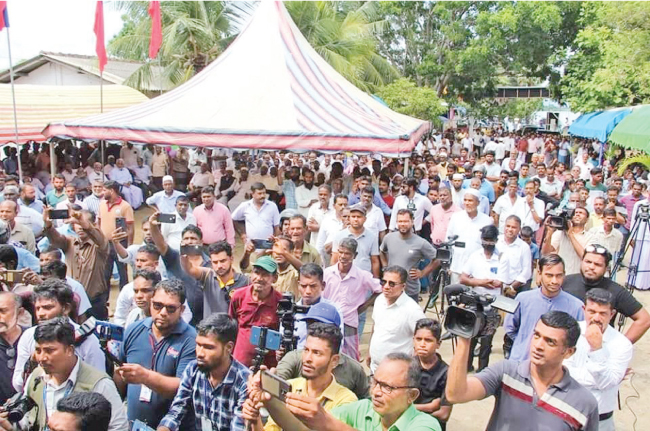
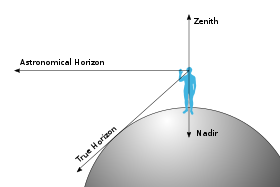

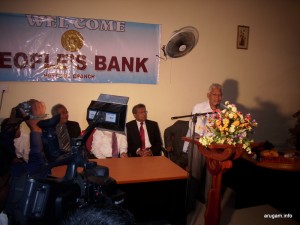
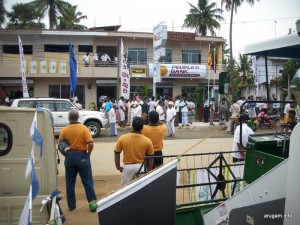
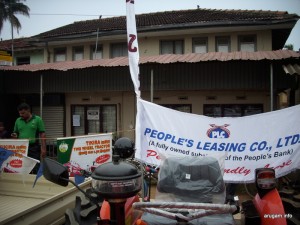
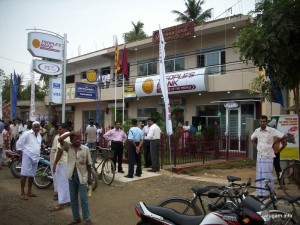
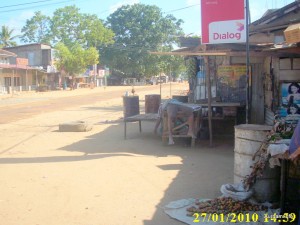
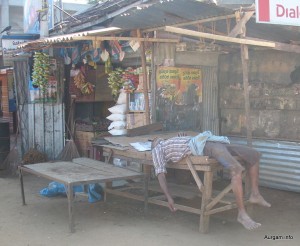
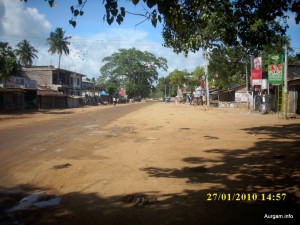



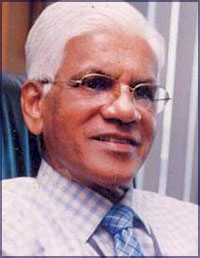
 The nineteenth A?a??A?Great heroes dayA?a??A? (GHD) was observed by the Liberation Tigers of Tamil Eelam (LTTE) on Thursday November 27. In recent times the most important event for the LTTE has been its annual A?a??E?Maaveerar NaalA?a??a?? or A?a??A?Maaveerar ThinamA?a??A?held each year.
The nineteenth A?a??A?Great heroes dayA?a??A? (GHD) was observed by the Liberation Tigers of Tamil Eelam (LTTE) on Thursday November 27. In recent times the most important event for the LTTE has been its annual A?a??E?Maaveerar NaalA?a??a?? or A?a??A?Maaveerar ThinamA?a??A?held each year.
 Arugam Forum
Arugam Forum Arugam Photo Galleries on Picasa
Arugam Photo Galleries on Picasa Old Website
Old Website Press Coverage
Press Coverage Surf Forecast for Arugam Bay
Surf Forecast for Arugam Bay
TODAY’s Comments